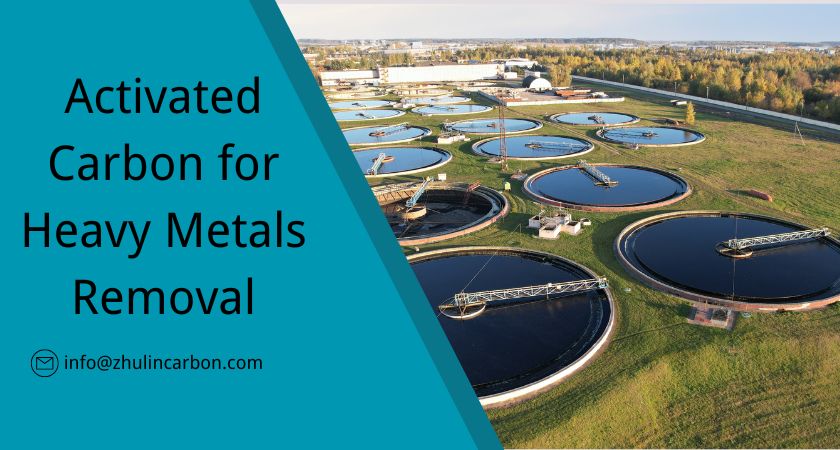
Activated carbon is a specialized form of carbon material processed to create millions of microscopic pores, resulting in an exceptionally large surface area. This unique structure, combined with its surface chemistry, makes it an excellent adsorbent for various contaminants, including heavy metals.
Does Activated Carbon Remove Heavy Metals?
Yes, activated carbon effectively removes heavy metals through multiple mechanisms. Its success lies in both physical and chemical processes. Through physical adsorption, heavy metal ions are trapped within the carbon's extensive pore network. Chemical adsorption means activated carbon can impregnate with some chemicals to interact with metal ions, forming stable compounds. The effectiveness of removal depends on factors such as pH, contact time, and the specific properties of the activated carbon used.Activated Carbon Application
Activated carbon finds extensive applications across various sectors. In industrial wastewater treatment, it handles electroplating waste and mining effluents. For drinking water purification, it's employed in municipal water treatment systems and point-of-use filters. Environmental remediation projects utilize activated carbon for soil treatment and groundwater cleanup. The material's versatility makes it an ideal choice for comprehensive heavy metal removal solutions.What heavy metals can activated carbon remove?

Activated carbon demonstrates impressive removal capabilities across a wide range of heavy metals, with effectiveness varying by metal type and treatment conditions. Understanding the specific removal characteristics for each metal is crucial for optimal treatment design. Here's a detailed breakdown of activated carbon's performance with different heavy metals:
Lead (Pb)
Lead (Pb) removal by activated carbon demonstrates exceptional efficiency, typically achieving over 90% removal under optimized conditions. The process performs best in pH range 5-7, with particularly strong results in drinking water treatment applications. Finer particle size carbons enhance removal effectiveness, making it possible to meet stringent drinking water standards of less than 0.015 mg/L.Mercury (Hg)
Mercury (Hg) treatment shows remarkable results with both organic and inorganic forms, especially when using sulfur-impregnated carbons. The removal efficiency typically exceeds 95%, making it highly effective for chlor-alkali wastewater treatment and industrial emissions control. Temperature and pH control are crucial for maintaining optimal performance levels.Cadmium (Cd)
Cadmium (Cd) removal achieves its best performance in neutral to slightly alkaline conditions, with removal rates up to 85% under optimized parameters. This is particularly important for treating electroplating wastewater, where cadmium concentrations can be significant. The process demonstrates strong temperature sensitivity, requiring careful monitoring for consistent performance.Chromium (Cr)
Chromium (Cr) treatment effectively handles both Cr(III) and Cr(VI) species, with removal rates typically ranging from 80-90%. The process shows enhanced efficiency in acidic conditions for Cr(VI), making it particularly valuable for leather tanning waste treatment. The presence of competing ions can affect removal efficiency, necessitating careful system design and operation.Arsenic (As)
Arsenic (As) removal benefits significantly from specially modified activated carbons, with effectiveness heavily dependent on pH conditions. This capability is particularly crucial for groundwater treatment applications, where arsenic contamination is a common concern. Regular monitoring of breakthrough points ensures consistent performance throughout the treatment cycle.Copper (Cu)
Copper (Cu) removal exhibits high efficiency due to favorable electron configurations, typically achieving 85-95% removal rates. The process works effectively across a broad pH range and reaches equilibrium quickly, making it particularly suitable for plating waste applications. The consistent performance makes it a reliable choice for industrial wastewater treatment.Zinc (Zn)
Zinc (Zn) treatment shows optimal results in neutral pH conditions, typically achieving removal rates of 75-85%. The process performs well in metalworking wastewater applications, though removal efficiency can be affected by the presence of competing metals. Careful attention to operating conditions ensures consistent performance.Nickel (Ni)
Nickel (Ni) removal demonstrates significant effectiveness through surface interactions, typically achieving 70-80% removal efficiency. The process is particularly valuable for electronics industry wastewater treatment, showing good results in both batch and column operations. Temperature control is essential for maintaining optimal removal rates.The removal efficiency for these heavy metals depends on several critical factors including pH level, contact time, temperature, and initial concentration. For optimal results, treatment systems should be designed with consideration of these parameters and the specific characteristics of the target metals. While activated carbon shows strong removal capabilities for all these metals, achieving maximum efficiency requires proper carbon selection and careful control of operating conditions. Regular monitoring and maintenance ensure consistent performance in meeting water quality requirements.
Conclusion
In an era where water quality is increasingly crucial, activated carbon stands out as a reliable solution for heavy metals removal. Its versatility, efficiency, and cost-effectiveness make it an ideal choice for both industrial and municipal applications.For professional guidance on selecting the right activated carbon solution for your heavy metals removal needs, contact Zhulin Carbon. Our technical team provides custom solution design, technical support, and product recommendations. Contact us now to create cleaner, safer water resources through effective heavy metals removal.

